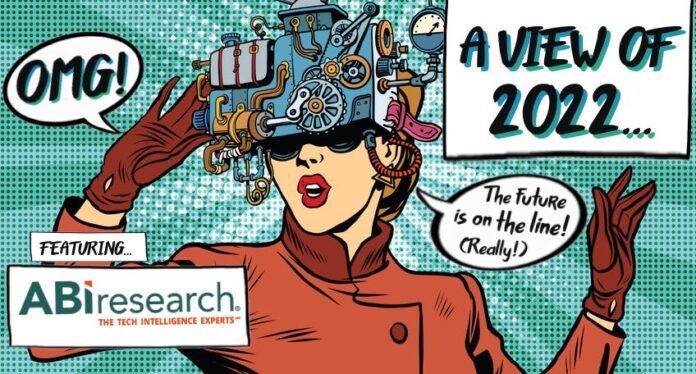Covid-19 caused supply-chain disruptions across vertical industries. The pandemic deepened market uncertainty and severely impacted the adoption of IoT. Healthcare was the main exception, as the global crisis expanded IoT use cases in production and logistics around healthcare products, as well as in hospitals and care facilities. The other exception was with remote working, with spiralling interest in IoT solutions for workforce collaboration, remote monitoring, and remote control for enterprises to optimize their field service operations.

In terms of IoT tech, the promise of low-power wide-area (LPWA) networks to accelerate IoT adoption has remained unfulfilled as technology complexities persist. In 2022, NB-IoT and LoRaWAN will strengthen their positions as the dominant LPWA network technologies, particularly as the IoT solution ecosystem matures to address a broad spectrum of enterprise pain points. The primary verticals driving takeup of these technologies are summarised below.
Energy and water utilities
Utility service providers will remain the largest adopters of massive IoT solutions as they expand their smart grid initiatives and continue with smart meter rollouts. After marginal growth in 2021, because of component shortages, global smart meter shipments will see double-digit growth in 2022 driven by demand in all regions – although APAC will account for nearly two-thirds of all smart meter shipments. More advanced utilities will expand IoT to automate grid distribution, add resilience to their operations, and support growing consumer demand for renewable energy.
Commercial buildings
The commercial building automation market, especially office buildings, will continue to witness uncertainty in 2022 as real-estate companies struggle to retain tenants and manage increasing costs from cleaning measures to ensure the health and safety of their tenants. IoT and wireless connectivity technologies will drive momentum for next-generation managed building automation systems, such as space management, environmental monitoring, cleanliness, and hygiene management.
Supply chain
With labour shortages, port congestion, freight costs, and chip shortages, enterprises have increasingly turned to IoT to address gaps in supply chain visibility. The demand for real-time asset visibility will continue to drive supply-chain IoT in 2022, across industries such as pharmaceuticals, food, retail, and automotive. Meanwhile, the shift to a circular economy to achieve sustainability goals will require enterprises to close the supply chain loop and make longer-term investments – not just in point solutions for specific activities (warehouse or yard management) but in fully integrated solutions that provide visibility across all aspects of the supply chain.

